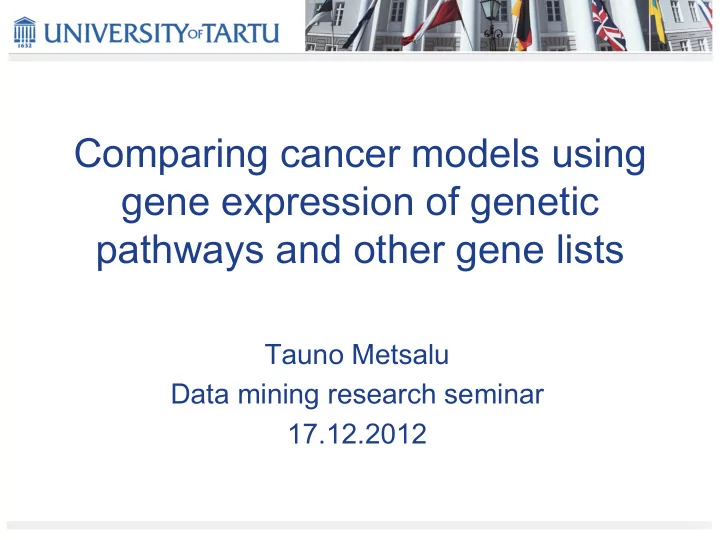

Comparing cancer models using gene expression of genetic pathways and other gene lists Tauno Metsalu Data mining research seminar 17.12.2012
Introduction • Before testing a drug on human, it has to be tested and effective on a simpler model • Most potential drugs lack the expected efficacy on human, even when working properly on a model • It is important to understand the exact aspects how models could be improved
Drug development pipeline
Model systems
Cell line as a model system • Cheaper • Stays alive for longer • Less variable • Differs from real cancer! • How much and in which sense does it differ?
Collected expression data
Microarrays (1)
Microarrays (2)
Gene lists • We use two different ways to define gene lists • Pathways – groups of genes with a specific biological function (KEGG database) • Interaction partners – we take all interaction partners of a specified gene (FunCoup database)
Similarity • Absolute similarity – Spearman’s correlation converted into 0-1 scale • Relative similarity – relative rank of absolute similarity among all gene lists (used just for better intuition)
Data integration InParanoid ortholog mapping mouse samples human samples mouse human pathway pathway genes genes green: pairwise data comparisons used
Analysis • We used two different genes as basis: EGFR and MTOR • They have enough data for both gene list definitions (pathways and interaction partners)
EGFR
MTOR
Summary • We proposed a pipeline to compare cancer models • It is possible to integrate data from different platforms and species (human and mouse) • MTOR is better retained in cancer models than EGFR
Acknowledgements • Prof Jaak Vilo • Priit Adler • Raivo Kolde
Recommend
More recommend